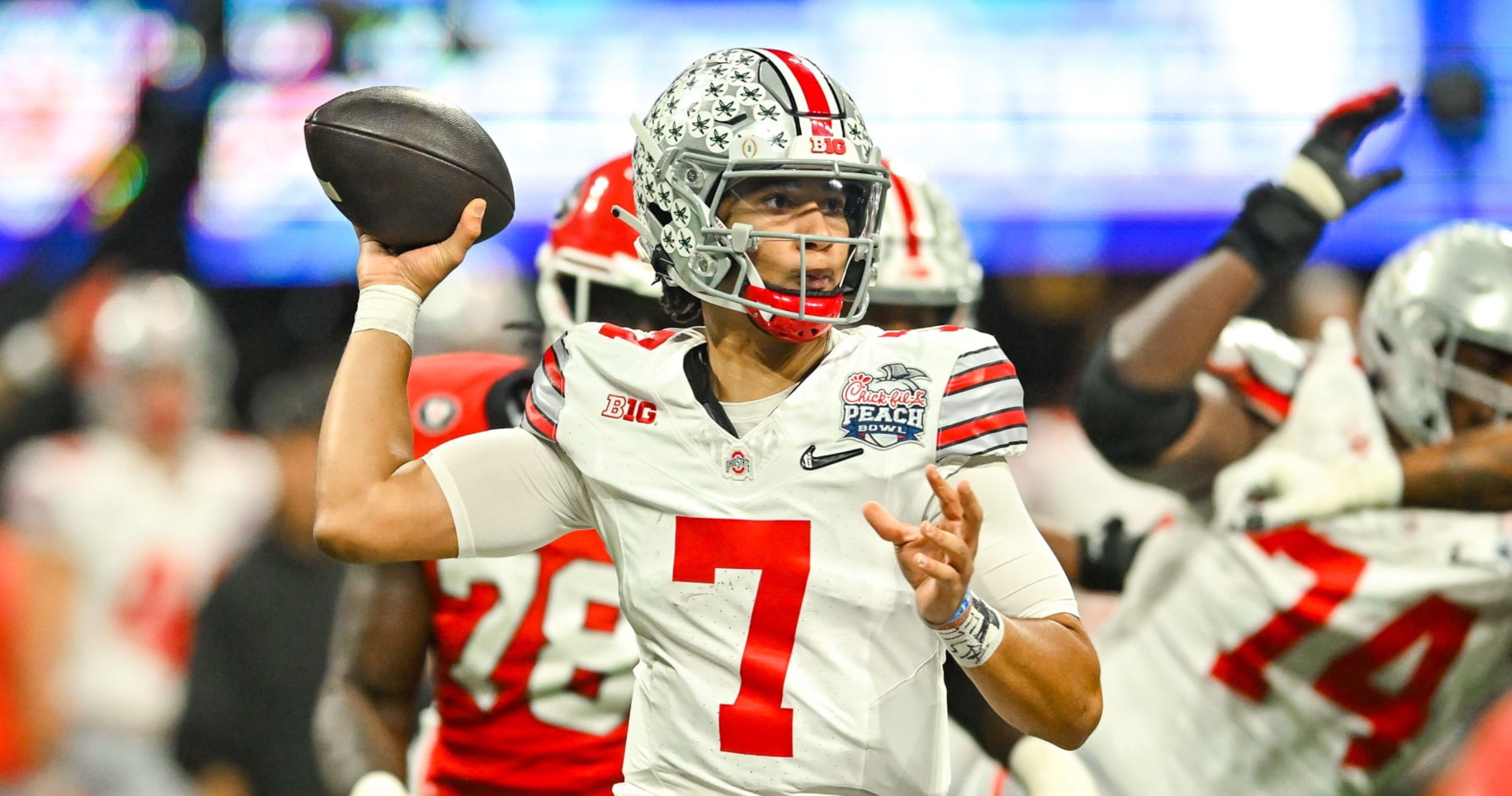
Ohio State QB’s Non-Throwing Hand Deforms Into Gruesome Knot During Cotton Bowl Clash: A Deep Dive into the Medical and Ethical Implications
The college football world was sent into shock on Monday when Ohio State quarterback Kyle McCord‘s non-throwing hand twisted grotesquely during the Cotton Bowl game against Georgia. The horrifying injury led to McCord’s immediate exit from the field and sent medical professionals scrambling to provide assistance.
An Unforeseen Medical Nightmare
McCord’s hand suffered a gruesome injury known as a Boutonnière deformity, a dislocation of the finger’s middle joint that causes the finger to bend unnaturally. The injury is typically caused by an impact to the palm of the hand, which forces the joint backward and damages the tendon that connects the finger to the bone.
The Boutonnière deformity is a serious injury for any athlete, but especially for quarterbacks who rely on their hands for throwing and handling the football. The deformed hand could potentially hinder McCord’s ability to grip the ball effectively and limit his range of motion. It is still unclear how long McCord will be out for, but the injury is a significant setback for the highly touted quarterback.
Ethical Concerns of Pain Management
While McCord’s physical recovery is of paramount importance, medical professionals must also grapple with the ethical implications of pain management. During the game, it was reported that McCord received an injection directly into his injured finger to numb the pain. This practice, known as a nerve block, is common in sports medicine, but it carries certain risks.
Nerve blocks can provide temporary pain relief, allowing athletes to continue playing through injuries. However, excessive or improper use of nerve blocks can lead to nerve damage and other complications. It is crucial for medical personnel to weigh the potential risks and benefits carefully before administering nerve blocks, especially in the context of a high-stakes sporting event.
Perspectives on the Injury
The news of McCord’s injury has sparked various perspectives and discussions within the sports community:
- Medical Experts: Emphasize the severity of the injury, the potential impact on McCord’s career, and the need for careful monitoring and rehabilitation.
- Ohio State Fans: Expressed concern for McCord’s well-being and disappointment over the potential loss of a key player for the upcoming season.
- Opponents: Acknowledged the unfortunate nature of the injury but maintained a competitive spirit, recognizing that injuries are part of the game.
- Ethicists: Raised questions about the use of pain management techniques in sports and the potential consequences for athlete health and safety.
Lessons Learned and the Way Forward
The gruesome injury suffered by Kyle McCord serves as a stark reminder of the fragility of the human body and the unpredictable nature of sports. It has also highlighted the importance of responsible medical care, ethical considerations, and player safety.
Moving forward, sports organizations, medical professionals, and athletes themselves must prioritize prevention, proper injury management, and informed decision-making. By embracing a comprehensive approach to player health and safety, the tragic consequences of injuries like McCord’s can potentially be minimized, allowing athletes to perform at their best while safeguarding their well-being.
